Luke Kelly: Collections of Peculiar Singularity
December 11, 2012
There is an upcoming auction at Sotheby’s, on the 12Â and 13Â of December, of a huge and remarkable collection of photographs all focused around hands:
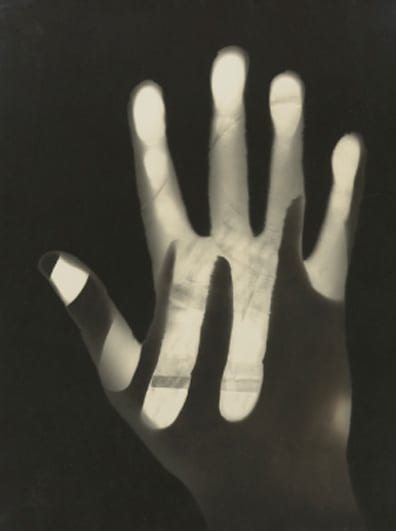 László Moholy-Nagy, FOTOGRAMM, 1925. Photo courtesy of Sotheby’s
László Moholy-Nagy, FOTOGRAMM, 1925. Photo courtesy of Sotheby’s
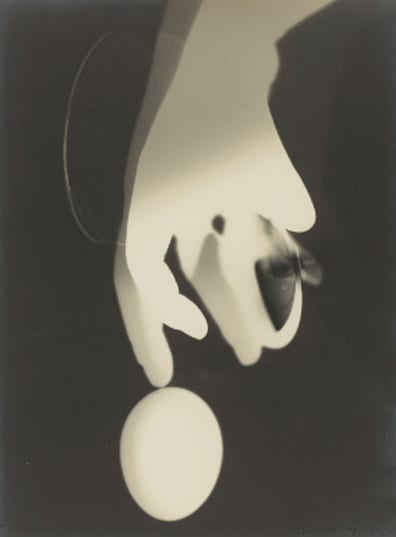 Man Ray, Rayograph With Hand, Lens, and Egg, 1922. Photo courtesy of Sotheby’s
Man Ray, Rayograph With Hand, Lens, and Egg, 1922. Photo courtesy of Sotheby’s
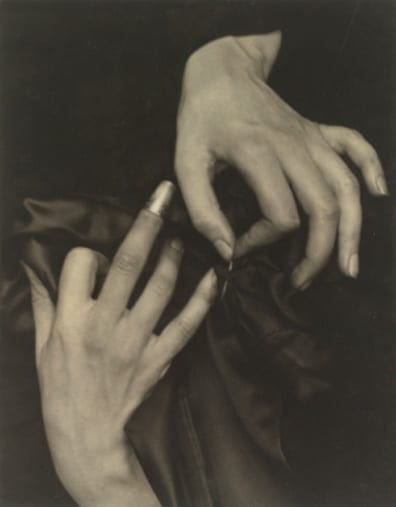 Alfred Stieglitz, Hands of Georgia O’Keeffe, 1919. Photo courtesy of Sotheby’s
Alfred Stieglitz, Hands of Georgia O’Keeffe, 1919. Photo courtesy of Sotheby’s
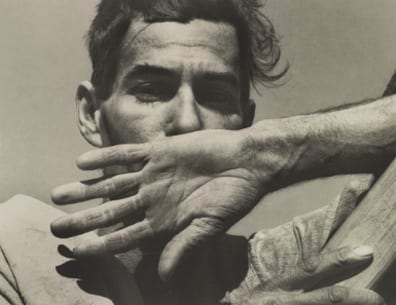 Dorothea Lange, Migratory Cotton Worker, Eloy, Arizona, 1940. Photo courtesy of Sotheby’s
Dorothea Lange, Migratory Cotton Worker, Eloy, Arizona, 1940. Photo courtesy of Sotheby’s
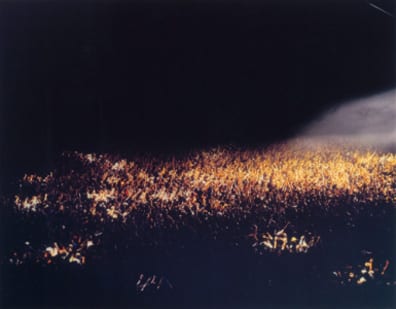 Andreas Gursky, May Day II, 1998. Photo courtesy of Sotheby’s
Andreas Gursky, May Day II, 1998. Photo courtesy of Sotheby’s
The diversity of this singular focus is astounding, amplified by the incredibly expressive and telling nature of the way people use their hands. This amazing sale has gotten me thinking about other deep veins of collecting that I have come across. When done correctly, vast collections with narrow focuses–in shops, private homes or institutions–can contextualize and empower themselves, with echoes and minor differences drawn out by the relationships shown.
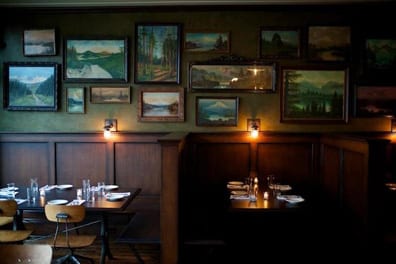 The Woodsman Tavern’s collection of green landscapes, Portland, OR. Photo courtesy of Remodelista.com
The Woodsman Tavern’s collection of green landscapes, Portland, OR. Photo courtesy of Remodelista.com
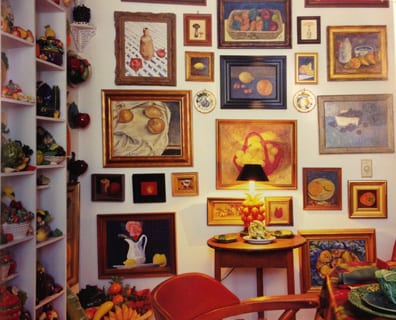 Brian Hourican’s Fruit Colelction, shown in Weird Rooms by Alexander Vertikoff, 1996.
Brian Hourican’s Fruit Colelction, shown in Weird Rooms by Alexander Vertikoff, 1996.
Of course, in Vermont there is the amazing and eclectic Shelburne museum, which houses 150,000 works from Electra Havemeyer Webb’s collection, including the lighthouse and steamship that she had moved to the site. While the entire magpie-like amalgamation is amazing, it is the hundreds of circus posters and thousands of hand-carved miniature circus parade figures that line the entire length of their own 518-foot long building that makes me think of the brilliance of obsessively narrow collections. An area that would not normally hold much interest for me, circus figurines, is suddenly given much more impact thorough the associations and juxtapositions created by great playful repetition.
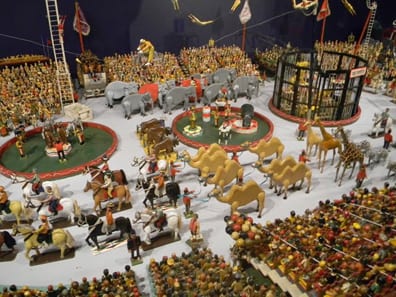 Circus figures. Photo courtesy of the Shelborne Museum.
Circus figures. Photo courtesy of the Shelborne Museum.
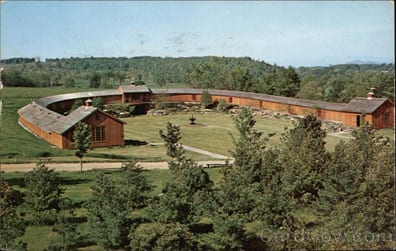 The snaking u-shaped building, built to hold the 518 foot circus figurine procession. Photo courtesy of Card Cow.
The snaking u-shaped building, built to hold the 518 foot circus figurine procession. Photo courtesy of Card Cow.
Last year I went into a brilliant rare bookshop, Oliver Wood, tucked away in a tiny London mews house. The ground floor was filled with interesting bits and pieces, but it was the second floor that was reserved for the two remarkable items on sale. One was an entire collection of books all relating to the subject of death and the other was a similarly vast collection of historical books relating to sex. This binary sex-death collection occupied the majority of the second floor, and they were only available for sale as a whole. The proprietor told me that–as it is in life–the sex part of the collection was better than the death part, before adding, “but we are still working on it.â€
All sorts of other strange, singular collections exist. I know someone who only collects red paintings; the Foundering Museum in London has a collection solely made up of the mementos left by mothers with their children at the orphanage gate. I even once sat next to someone at a dinner who boosted as to having collected everything that could be found that documented the life of an unremarkable 19th century Scottish immigrant. He aimed to own every single thing that existed that spoke of her existence
Even to a collector like me, this seems to be the limit.
-Luke Kelly
Luke Kelly and Emily Eisen own and run Mill Goods. The shop sells an eclectic mix of industrial and vintage finds out of an old textile mill boiler house sitting atop a stream, in Harrisville, NH. Luke also writes children’s stories and has three books due out with Putnam.
Share
![NEH-Logo_Black[1] NEH-Logo_Black[1]](https://b2915716.smushcdn.com/2915716/wp-content/uploads/2022/08/NEH-Logo_Black1-300x162.jpg?lossy=1&strip=1&webp=1)







You must be logged in to post a comment.